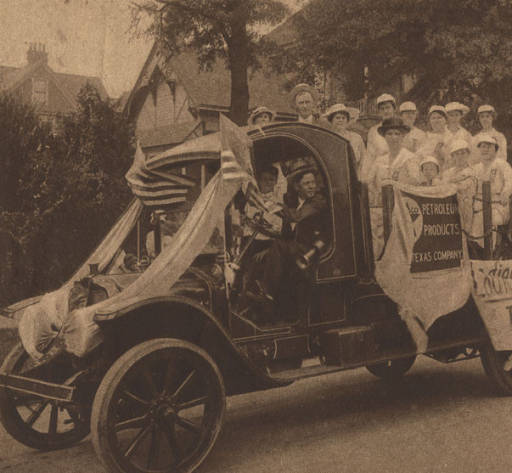As Kazek noted, you'll miss the good stuff if you just drive through on U.S. Highway 31. Thorsby is typical of so many small rural towns these days--some nice historical structures, perhaps some efforts at preservation, and some obvious signs of declne. For instance, we found a couple of large closed and deteriorating buildings we were told were a former school. These are no doubt the former elementary school built around 1925. They must have been in use until fairly recently, though; a wheelchair ramp led up to one main entrance. The fate of the school is precarious.
Its Scandinavian heritage gives Thorsby some unusual touches for a rural town in Alabama. Kelly covered that aspect in her article linked above. You can see an old photograph of the T.T. Thorson home here. An article about the house is here. Thorson was one of the town founders and its namesake; his house is still a private residence. Thorsby celebrates its heritage with an annual Swedish Festival.
A photo of the town's historical marker is here. The town's own website also offers more information. An article about the Thorsby High School that burned in 1975 is here. A fire almost exactly 50 years earlier had burned the private Thorsby Institute which the high school replaced. The current high school occupies the site today.
Below are some photos of the beautiful former Norwegian Lutheran Church building and its clock. An historical preservation committee for the town was formed in 2007 and has obviously done good work. Beverly Crider's article "Thor's Legacy Lives on in Alabama" is here.
On our visit I noticed that several streets in the town had the names of states: Alabama, Illinois, Indiana, Michigan. I wonder how that came about?
Two other Alabama towns with Scandinavian heritage are Silverhill in Baldwin County and Fruithurst in Cleburne County.
Further Reading
Kazek,, Kelly. Scenes from Thorsby: a touch of Scandinavia in Alabama. Birmingham News 23 August 2015.
Kent, Mark R. Thorsby--Alabama's Scandinavian town. Mobile Register 11 October 2004
Associated Press. Closing its doors: Small town losing its only pharmacy. Birmingham News 11 August 2002














































